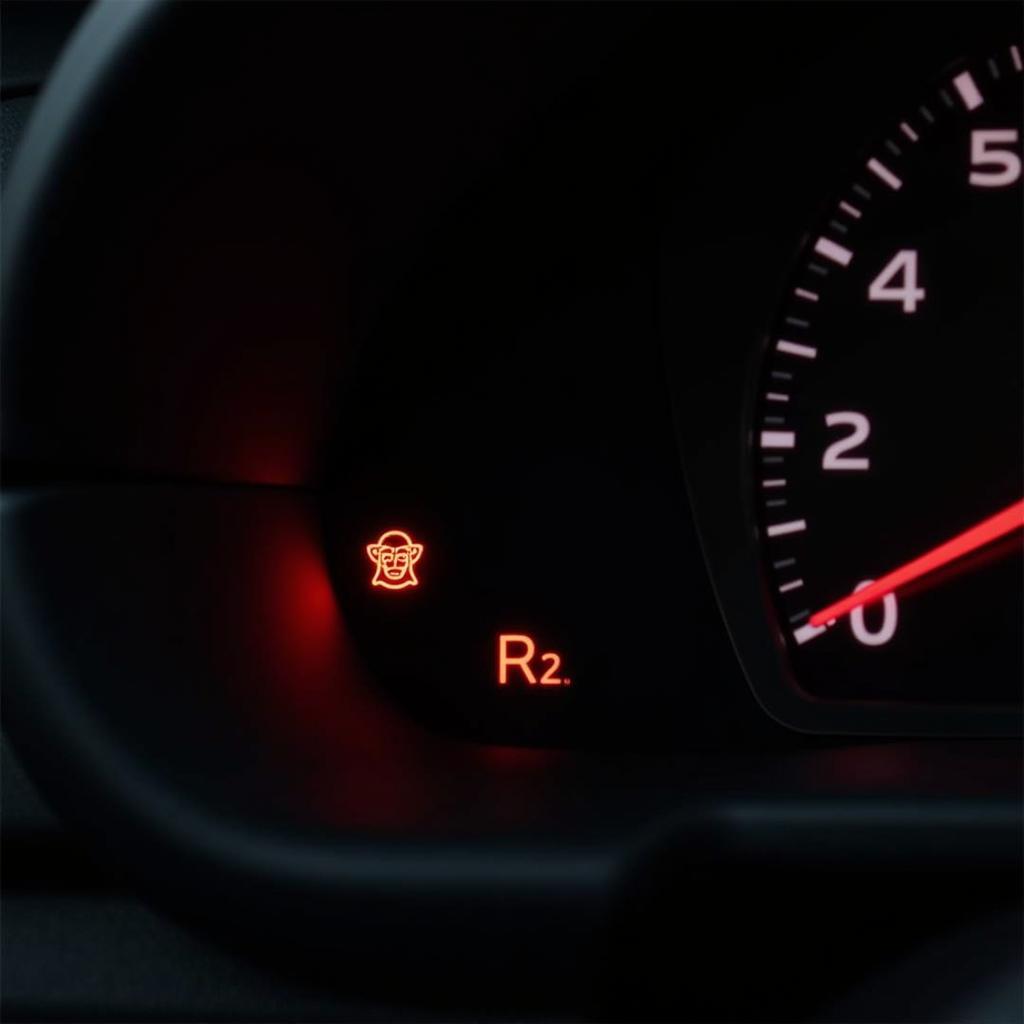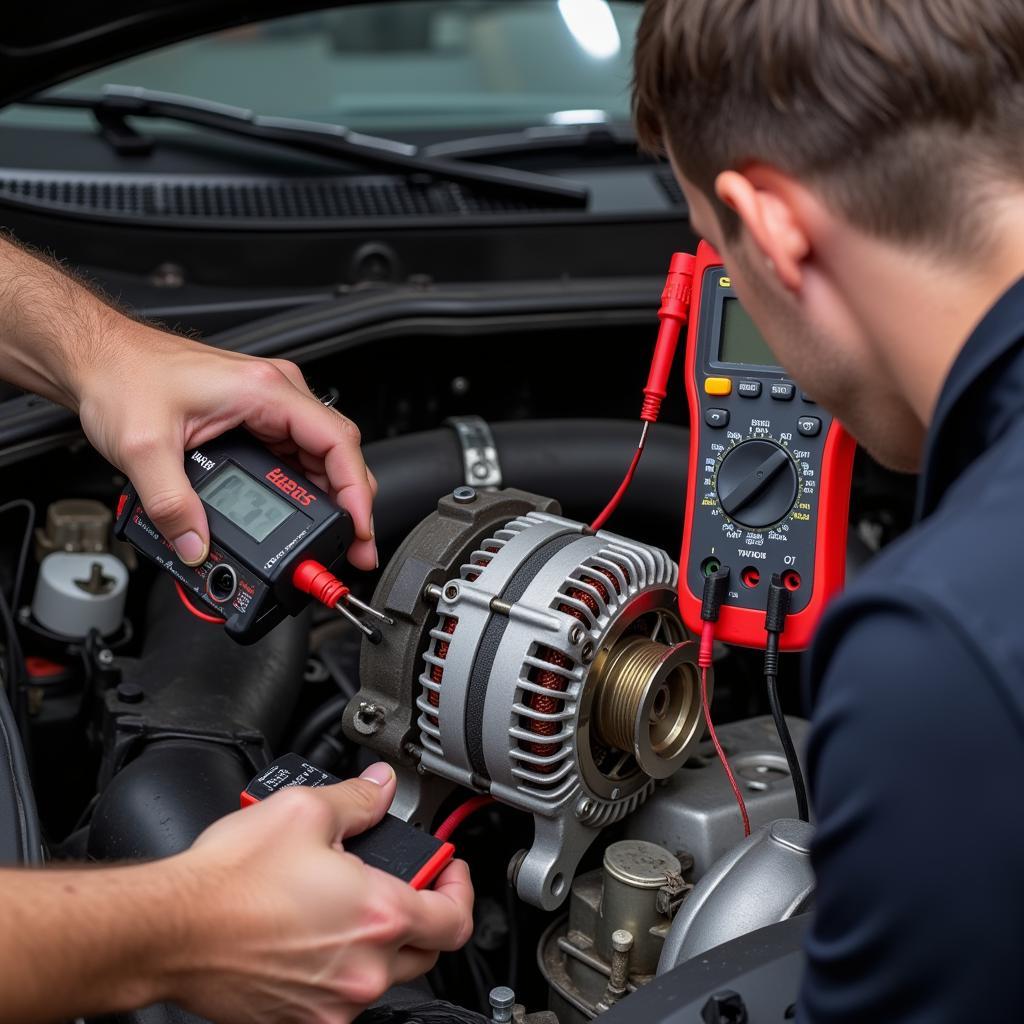You hop out of your car, hit the button on your keychain, and hear that satisfying chirp as the doors lock. That little device in your hand? That’s your key fob. But have you ever stopped to think about what’s going on inside that plastic shell? “Key fob meaning Wikipedia” is a popular search term, but there’s a lot more to uncover about these ubiquitous devices than a simple definition.
While a key fob might seem like simple tech, especially compared to the computerized wizardry happening under the hood of your car, it represents an elegant solution to a practical problem: secure and convenient car access. Let’s dive deeper into the world of key fobs, exploring everything from the basic “key fob meaning” to advanced features and even potential security vulnerabilities.
Decoding the Key Fob: What Does Key Fob Mean Anyway?
In the simplest terms, a key fob (also known as a remote keyless system or RKS) is a small electronic device that uses radio waves to communicate with your car, allowing you to perform actions like:
- Locking and unlocking the doors
- Opening the trunk
- Starting the engine remotely
- Activating the panic alarm
The term “fob” itself is a fascinating relic of history. Originally, a “fob” referred to a small pocket attached to a pocket watch chain. As technology evolved, the term was adopted for these small, convenient keychains that controlled our vehicles.
Inside the Magic: How Key Fobs Communicate
Key fobs operate on the principle of Radio Frequency Identification (RFID). Each fob transmits a unique, coded signal that your car’s receiver recognizes. Think of it like a secret handshake between your key fob and your vehicle.
This wireless communication is what makes key fobs so convenient. You no longer need to physically insert a key into a lock. A simple press of a button sends a coded message, and voila! Your car responds.
Beyond the Basics: Advanced Key Fob Features
Modern key fobs have evolved far beyond simple lock and unlock functionality. Today’s key fobs are packed with features designed to make your life easier and your car more secure:
- Remote Start: Imagine stepping out on a frigid winter morning to a pre-heated car. Remote start systems, activated by your key fob, allow you to do just that.
- Keyless Entry: Say goodbye to fumbling for your keys! Keyless entry systems detect your key fob as you approach, automatically unlocking the doors when you’re within a certain range.
- Panic Button: In an emergency situation, a dedicated panic button on your key fob can set off your car alarm, drawing attention and potentially deterring an attacker.
- Memory Settings: Some advanced key fobs can store personalized settings for multiple drivers. With a touch of a button, you can adjust seat position, mirror angles, climate control, and even radio presets.
The Vulnerability Question: How Secure Are Key Fobs?
While key fobs offer unparalleled convenience, they are not without vulnerabilities. Tech-savvy thieves have developed sophisticated methods to exploit weaknesses in some key fob systems.
-
Relay Attacks: This technique involves two thieves working in tandem. One thief uses a device to capture and amplify the signal from your key fob (even if it’s inside your house!), while the other uses a second device to relay that amplified signal to your car, tricking it into thinking the real key fob is present.
-
Signal Jamming: Criminals can use jammers to block the signal from your key fob, preventing you from locking your car and leaving it vulnerable to theft.
Expert Insight: “As a security professional specializing in automotive systems, I always advise car owners to be aware of potential key fob vulnerabilities,” says Sarah Chen, Lead Security Engineer at AutoSafe Technologies. “Simple precautions like using a Faraday bag to block signals when your key fob is not in use can significantly reduce your risk.”
The Future of Key Fobs: What’s Next?
The evolution of the key fob is intrinsically tied to the automotive industry’s relentless march toward innovation. As cars become increasingly connected and autonomous, we can expect to see key fobs transform alongside them.
- Smartphone Integration: Imagine a world where your smartphone becomes your key. Many car manufacturers are already offering apps that allow for keyless entry, remote start, and other functions traditionally handled by a physical key fob.
- Biometric Authentication: The future of security might be at our fingertips—literally. Biometric authentication, such as fingerprint or iris scanning, could be integrated into future key fobs or smartphone-based systems for even greater security.
Conclusion
From its humble beginnings as a simple remote control, the key fob has become an indispensable part of the modern driving experience. While security concerns remain a valid point of discussion, ongoing advancements in technology promise to make these devices even more secure and feature-rich in the years to come. So the next time you effortlessly unlock your car with a click, take a moment to appreciate the ingenuity packed into that little device we often take for granted.


